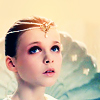
I just read the beginning introductory sections of The Annotated Brothers Grimm by Maria Tatar. I always loved fairy tales, but developed an interest in archetypes and fairy tale analysis in high school and began reading books on that topic, in addition to the fairy tales, myths, and folktales themselves. I could relate to a lot of what the introduction said about fairy tales, and the structure of fairy tales meshes well with my preference for structure. I always mentally build systems and visual-spatial catalogues, and the simplicity and directness of fairy tales make them much easier for me to comprehend than a lot of fiction. Everything is left open enough, the characters and the settings, for me to vividly create imagery that best suits me and my needs, and I can easily put myself and people I know in the various positions of the characters. Fairy tale worlds manage to both be magical and predictable. Certain sequences of events are typical in the narrative and there tends to be certain consequences for certain actions. Fairy tales tend toward rule-based systems. Of course, strange things happen and not every tale is the same, but there are many common, archetypal features. Fairy tales leave room for your imagination to take over, for the elements that have personal meaning to you to come to the forefront, for the cruelties and chaos in real life to be recreated in another magical world where things actually make sense, and redemption and closure are possible.
This also makes me think of a recent essay I read by Jorge Borges, entitled "Narrative Art and Magic." He also talks about the magic of language and words, and the transformation they can provide. (Makes sense with the theme of "magic words" in folklore).